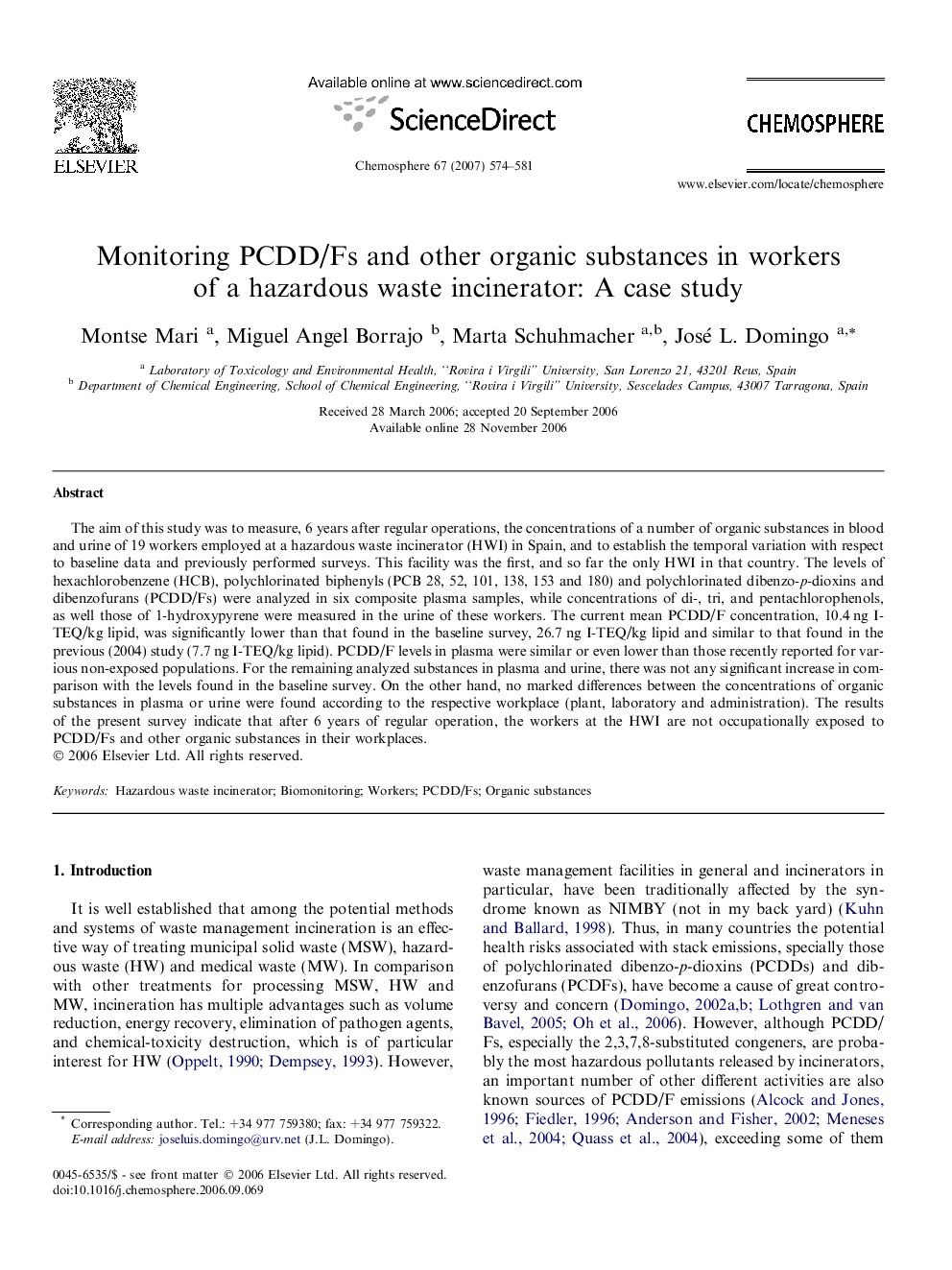| Article ID | Journal | Published Year | Pages | File Type |
|---|---|---|---|---|
| 4415690 | Chemosphere | 2007 | 8 Pages |
The aim of this study was to measure, 6 years after regular operations, the concentrations of a number of organic substances in blood and urine of 19 workers employed at a hazardous waste incinerator (HWI) in Spain, and to establish the temporal variation with respect to baseline data and previously performed surveys. This facility was the first, and so far the only HWI in that country. The levels of hexachlorobenzene (HCB), polychlorinated biphenyls (PCB 28, 52, 101, 138, 153 and 180) and polychlorinated dibenzo-p-dioxins and dibenzofurans (PCDD/Fs) were analyzed in six composite plasma samples, while concentrations of di-, tri, and pentachlorophenols, as well those of 1-hydroxypyrene were measured in the urine of these workers. The current mean PCDD/F concentration, 10.4 ng I-TEQ/kg lipid, was significantly lower than that found in the baseline survey, 26.7 ng I-TEQ/kg lipid and similar to that found in the previous (2004) study (7.7 ng I-TEQ/kg lipid). PCDD/F levels in plasma were similar or even lower than those recently reported for various non-exposed populations. For the remaining analyzed substances in plasma and urine, there was not any significant increase in comparison with the levels found in the baseline survey. On the other hand, no marked differences between the concentrations of organic substances in plasma or urine were found according to the respective workplace (plant, laboratory and administration). The results of the present survey indicate that after 6 years of regular operation, the workers at the HWI are not occupationally exposed to PCDD/Fs and other organic substances in their workplaces.
